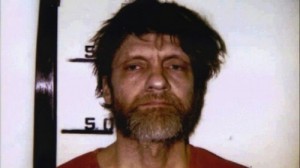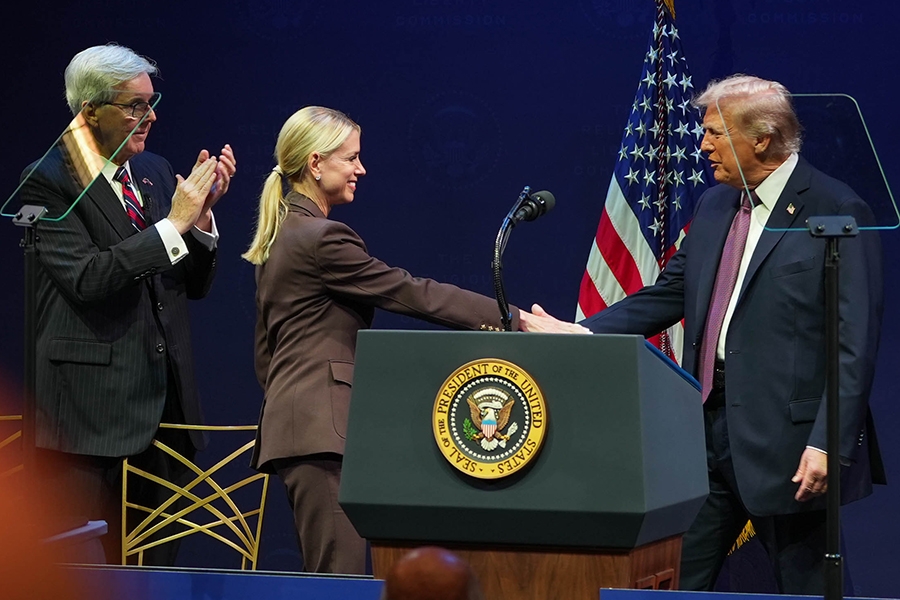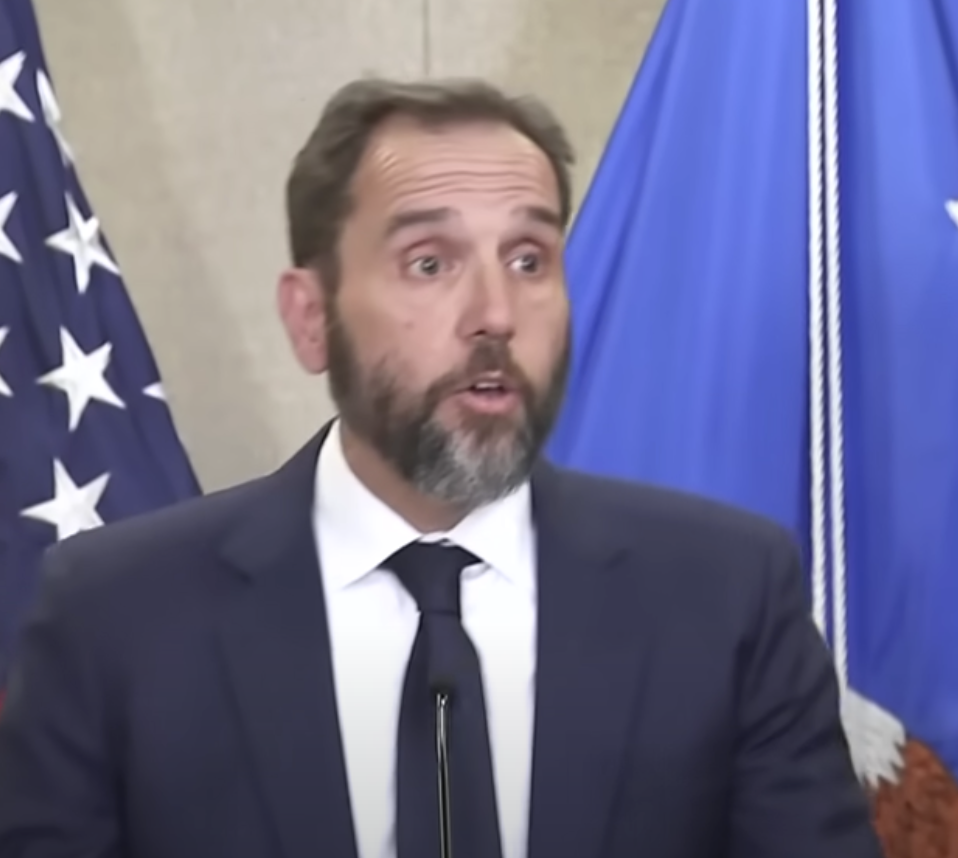Greg Stejskal served as an FBI agent for 31 years and retired as resident agent in charge of the Ann Arbor office. This column first appeared in Deadline Detroit.
By Greg Stejskal
ticklethewire.com
There’s a memorable scene near the end of the classic John Ford movie and parable about the triumph of the rule of law in the old west, “The Man Who Shot Liberty Valance.”
The editor of the local newspaper has just heard the true story from Jimmy Stewart’s character, Ranse Stoddard, about the killing of Liberty Valance, an extremely bad guy and notorious gunfighter. Stoddard is in the autumn of a very successful political career that began, at least in part, because he had been proclaimed a hero for having killed Valance.
As it turns out Ranse Stoddard didn’t kill Valance.
When the interview with Stoddard ends, a young reporter asks the editor if he’s going to use the story. The editor replies, “This is the west. When the legend becomes fact print the legend.”
A few weeks ago I had a Liberty Valance moment when I was out to dinner with my wife. A local judge, who I have known for years, walked up to our table and introduced me to his wife as the FBI agent who identified the Unabomer. I sort of demurred and said something like, I helped, but it was a team effort.
This wasn’t the first time I’ve been given credit for identifying the Unabomer, and although it’s technically true, it’s definitely misleading.
So here’s the story:
I first became involved in the Unabomer investigation because one his bombs had been sent to Ann Arbor. (“Unabomer” was Bureau shorthand for university and airlines bomber and was used as the title of the case. And yes, the second “b” was dropped in the Bureau spelling.)
In November, 1985, a package (weighing about 5 lbs. and measuring 3”x 8”x 11”) was received in the mail at the residence of Prof. James McConnell. McConnell was teaching and doing research in the psychology department at the University of Michigan. The package was opened by an assistant of McConnell. It exploded and caused considerable damage to McConnell’s kitchen, but the assistant only suffered minor injury to his arms and abdomen.
This was the 10th bomb in a series of 16 sent by the Unabomer from 1978-1995. The bomb had been secreted in a hole cut in a ream of paper. The explosive device was basically a pipe-bomb filled with ammonium nitrate and aluminum powder. The pipe was sealed at either end by wooden caps rather than the usual threaded metal caps. The igniter was a nail held in tension by rubber bands poised to strike multiple match heads when disturbed by someone opening the package.
Because of this rudimentary construction, the bomb did not explode with anywhere near its potential power. Later bombs were more efficient and resulted in the death of 3 people and severe injuries to others.
One of the maddening elements of the Unabomer investigation was that there didn’t seem to be a common thread connecting the recipients of the bombs. And the construction of the bombs although similar was done with components that proved to be untraceable.
It wasn’t until the Unabomer‘s convoluted manifesto was published that some overarching motive could be discerned.
When Attorney General Janet Reno and FBI Director Louie Freeh persuaded the reluctant editors of the New York Times and Washington Post to publish the manifesto in its entirety – 35,000 words, it was hoped that someone would read it and associate it with the person who was the Unabomer.
It is a testament to Ted Kaczynski’s isolation that only one person did or could identify him, Ted’s estranged brother, David Kaczynski. But for Ted’s hubris in demanding his manifesto be published, he may never have been identified.
David’s wife, Linda, saw some common themes in the manifesto and some of Ted’s professed philosophy, but neither she nor David had had any contact with Ted in years. She encouraged David to read the manifesto. (Linda had thought Ted might be the Unabomer for some time prior to the publication of the manifesto.)
David was struck by the similarity between some of the ideas and phraseology in the manifesto and some old letters Ted had written and which David had kept. In the letters Ted had expounded on his anti-technology philosophy.
In the Fall of 1995, David and Linda contacted a friend, Susan Swanson, who was an attorney/investigator regarding their concerns about his brother. Swanson contacted Clinton Van Zandt, a retired FBI agent. Van Zandt, a hostage negotiator for the FBI had been assigned to the FBI’s Behavioral Analysis Unit which among other things does criminal profiling.
Swanson took the letters from which almost all the names and identifying information had been removed to Van Zandt and asked him to determine whether the author of the letters was the author of the manifesto. After reviewing the material, Van Zandt concluded that there was about a 50% possibility that the authors of the letters and the manifesto were the same. Van Zandt was not impressed enough with any similarity to pursue the information further.
Swanson had been investigating this matter pro bono, but was unable to continue.
The Kaczynskis’ concerns had not been alleviated. So they contacted another attorney friend who was practicing in Washington, D.C., Anthony Bisceglie. Bisceglie knew a FBI agent, Mike Harrison. Bisceglie apprised Harrison of David and Linda’s concerns without identifying them. He also provided Harrison with some of the redacted documents.
Harrison believed there was sufficient similarity in the writings to justify contacting the Unabomer Task Force in San Francisco. With Bisceglie’s knowledge, Harrison contacted the UTF and told them about the redacted letters and their similarity to the manifesto. He provided the task force with what information could be gleaned from the letters. Fortunately in the documents, some hints were mistakenly not redacted: The name “Ted” appeared and there were references to Harvard, Michigan and the University of California in Berkeley. (Bisceglie was not aware of the tell-tale information that remained in the documents.)
The UTF, which was comprised of FBI, Postal Inspectors and Bureau of Alcohol, Tobacco and Firearms agents had been coordinating the Unabom investigation and had recently been inundated with tips resulting from the publication of the manifesto. None of which would be of any value, but had to be investigated none the less.
The information Harrison provided stood out and seemed to have some promise. Several UTF agents would investigate the information in an effort to identify the author. Joel Moss, a FBI supervisor, assigned to the UTF would pursue the possible Michigan connection.
The evening of February 12th, I was working late when I received a call from Joel. I knew Joel as we had talked in the past about the Unabom investigation and the McConnell bombing. Joel explained to me about the letters, the manifesto and some information that might be useful in identifying the author.
They had determined that: his name was Ted (a derivation of either Theodore or Edward); he was born in the Chicago area; had done under-grad study at Harvard (probably in mathematics), and thereafter obtained or sought a PhD at the University of Michigan between 1968 and 1972. It was believed that subsequent to being at Michigan, Ted taught mathematics at the University of California at Berkley.
The UTF was making inquiries at UC Berkley, but so far they hadn’t been successful.
Joel impressed upon me the sensitivity of the information, and that it had to be handled as expeditiously as possible. In other words I needed to get personal information from the University of Michigan regarding a possible PhD candidate, whose name I didn’t know, and I couldn’t tell them why I was asking.
I had been in Ann Arbor and around the University long enough to know that people at the University would not welcome the FBI with open arms nor would I have any control over how many people became aware of the investigation. Further, they would refuse to do anything without a subpoena and nothing would happen quickly.
But I had a friend, Jim Smiley, the Assistant Director of the UM Department of Public Safety, the UM police. He was a graduate of the FBI National Academy (The prestigious school for law enforcement executives), and we had worked together on a number of occasions.
I called Jim and told him I needed to identify an individual who may have received a PhD from Michigan, but didn’t know his full name, etc. I did not tell him that the guy might be the Unabomer. I just said it was extremely important and very sensitive.
Jim didn’t question my sanity nor did he say such a check couldn’t be done without more information. Instead he said that he would see what he could do.
Within a few hours Jim called me back and told me that he had come up with 5 possibles, but only 1 seemed to fit all the criteria, Theodore Kaczynski. To Jim’s credit he never asked me what the inquiry was about.
I immediately called Joel Moss and gave him the name Theodore Kaczynski and what background information Michigan had about him. Joel told me I was to tell no one else, “At this moment there are only two people who know the identity of the Unabomer.”
It is my understanding that within a few days the UTF was contacted directly by Anthony Bisceglie. Initially Bisceglie had some pre-conditions he wanted to be agreed to before disclosing the identity of the Unabomer. Joel Moss and others on the UTF explained to the attorney that perhaps the discussion could move more quickly if the attorney knew that the UTF already had the name Ted Kaczynski.
Over the next few weeks, while the FBI had Kaczynski under surveillance in Lincoln, Montana, and arrest/search warrants were being prepared, I was making discrete inquiries regarding Ted’s time at Michigan. I learned that he was a brilliant if eccentric and socially inept student, who had studied theoretical mathematics.
About six weeks later, when Ted was arrested and the little cabin where he was living was searched, considerable evidence was found linking Ted to the bombings including a live bomb that was ready to be sent.
Joel Moss sent me a copy of Ted’s handwritten diary that was found at the cabin. I was particularly interested in what he had written about his time at Michigan – “These were the most miserable years of my life.” However, Ted didn’t send the bomb to Prof. McConnell because he was a disgruntled Michigan student. He sent it because he hated psychologists.
Although brilliant, Ted had many demons. He viewed himself as intellectually superior to other students and the faculty. He contemplated killing people even back then: “What was entirely new was the fact that I really felt I could kill someone. My first thought was to kill somebody I hated and then kill myself before the cops could get me. (I’ve always considered death preferable to long imprisonment.) But, since I now had new hope, I was not ready to relinquish life so easily. So I thought, I will kill, but I will make at least some effort to avoid detection, so that I can kill again.”
Ted Kaczynski is currently serving a life sentence with no possibility of parole at the Federal Penitentiary in Florence, Colorado – “Super Max,” where he is locked down 23 hours a day.
So technically I identified the Unabomer, but in reality I was merely a cog in the machinery that was already moving inexorably towards knowing Ted Kaczynski was the Unabomer.
Print the fact not the legend.






